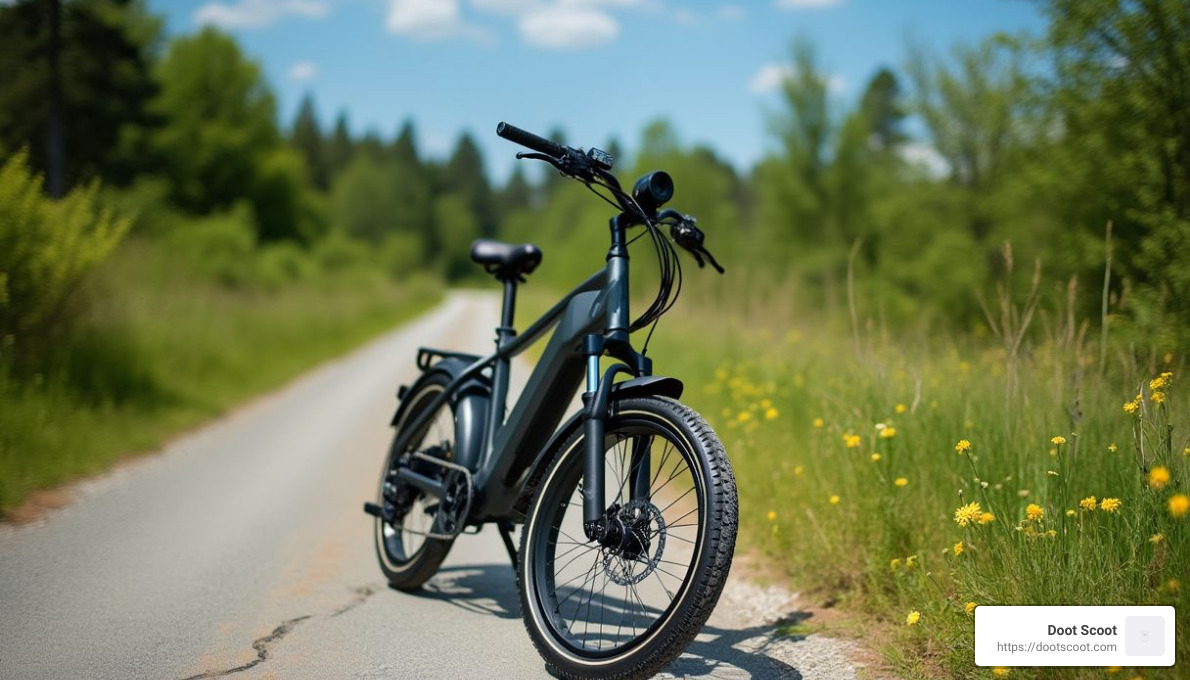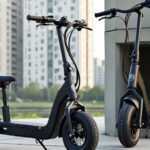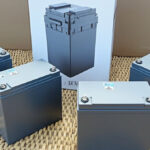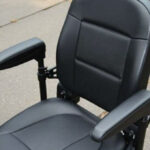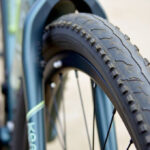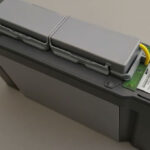When it comes to eBike motors, two names often come up in discussions: tongsheng tsdz2b vs tdz8. These mid-drive motors are popular choices for those wanting to convert their standard bicycles into efficient eBikes. Let’s unpack the differences between these two motors right off the bat:
- Motor Efficiency: TSDZ8 shows improved efficiency, especially at higher power outputs, than TSDZ2B.
- Power Output: TSDZ8 can handle more power, offering a higher peak output compared to TSDZ2B.
- Cooling and Overheating: TSDZ8 has better cooling capabilities, reducing the risk of overheating.
Both the TSDZ2B and TSDZ8 come from Tongsheng, a company known for offering budget-friendly eBike conversion kits. They allow bicycle enthusiasts to customize their rides without breaking the bank. However, each motor has its strengths and challenges, making the choice dependent on what you’re specifically looking for in your eBike setup.

Essential tongsheng tsdz2b vs tdz8 terms:
- best ebike conversion kits for hills
- horsepower and watts conversion
- giant trance x advanced e elite 2 upgrade
TSDZ2b vs TSDZ8: Key Differences
Motor Efficiency
When comparing motor efficiency between the TSDZ2b and TSDZ8, the TSDZ8 takes the lead. The TSDZ8 motor boasts an efficiency of about 73%. This is a noticeable improvement over the TSDZ2b, especially when running the original firmware. The TSDZ8 achieves this efficiency by better managing its power and minimizing drivetrain losses, which translates into longer battery life and a smoother ride.
Power Output
The power output of these two motors also shows significant differences. The TSDZ8 is designed to handle more power, with a nominal power rating of 750W and a peak power output that can reach up to 1150W. This is a step up from the TSDZ2b, which struggles to maintain its nominal power of 500W without overheating.
The TSDZ8’s assistance levels are more robust, especially after a firmware update that addresses issues with the first two levels. The update ensures that the motor provides smooth and responsive assistance across all levels, making it suitable for various riding styles and terrains.
Cooling System
Cooling is a critical aspect of motor performance, and the TSDZ8 excels in this area. The TSDZ8 features improved cooling mechanisms that allow it to dissipate heat effectively. This is evident in stress tests where the motor maintains stable temperatures at nominal power levels without overheating.
In contrast, the TSDZ2b often overheats at its declared power level unless modified with additional cooling solutions. The TSDZ8’s ability to manage heat more efficiently means fewer interruptions and a longer lifespan for the motor.

Firmware updates play a crucial role in enhancing the TSDZ8’s cooling and performance capabilities. Recent updates have resolved initial problems with assistance levels and have improved the motor’s overall efficiency.
In summary, the TSDZ8 outshines the TSDZ2b in terms of motor efficiency, power output, and cooling system. These improvements make the TSDZ8 a more reliable choice for those looking to get the most out of their eBike conversion.
Next, we’ll dive into how these differences affect the performance and riding experience.
Performance and Riding Experience
Torque Sensing and Cadence
When it comes to torque sensing, the TSDZ8 offers a more refined experience compared to the TSDZ2b. Thanks to its advanced torque sensor, the TSDZ8 motor provides assistance that feels natural and intuitive. The motor kicks in smoothly, delivering power that adjusts seamlessly as you pedal harder or softer. This makes for a riding experience that feels more connected and responsive.
The cadence range of the TSDZ8 is another standout feature. Unlike the TSDZ2b, which struggles at higher cadences, the TSDZ8 continues to provide assistance up to a cadence of 120-130 revolutions per minute. This wider range allows for more flexibility, especially for riders who prefer a faster pedaling rhythm. The TSDZ2b, on the other hand, tends to taper off at a cadence of around 80-85, which can be limiting for those who like to push the pace.
The assistance smoothness of the TSDZ8 is greatly improved by the firmware updates, which have resolved issues with the initial assistance levels. This means that riders can enjoy a consistent and smooth power delivery, regardless of the terrain or riding conditions.
Riding Impressions
The acceleration provided by the TSDZ8 is impressive. It ramps up power quickly and efficiently, allowing for rapid acceleration when needed. This is particularly beneficial in technical terrain or when sudden speed is required. The experience is akin to having a “Boost” feature, similar to the one found in the TSDZ2 with open-source firmware, but without the abrupt cutoff at higher cadences.
In terms of noise levels, the TSDZ8 is quieter than its predecessor. It emits a subtle “whistling” sound that remains consistent, even as the motor speed increases. The TSDZ2b, by contrast, becomes noticeably louder at higher RPMs, which can be distracting for some riders.
User feedback on the TSDZ8 has been largely positive, highlighting the motor’s smooth operation and reliable performance. One user noted, “The assistance is smooth and gentle from the very start,” emphasizing the motor’s ability to provide predictable and controlled assistance. However, some riders have pointed out a slight “overrun” where the motor continues to provide power for a fraction of a second after pedaling stops. While this is a minor issue, it’s worth noting for those who prioritize precision in motor response.
Overall, the TSDZ8 offers a superior riding experience with its improved torque sensing, broader cadence range, and quieter operation. These improvements make it a compelling choice for those looking to upgrade their eBike setup.
Next, we’ll explore the build quality and installation aspects of these motors.
Build Quality and Installation
Motor Design and Build Quality
When it comes to motor design, the TSDZ8 stands out with its robust construction and thoughtful improvements over the TSDZ2b. The TSDZ8 motor has been put through rigorous testing, surviving daily commutes, off-road trips, and even an accidental “bath” in a river without any signs of water ingress or wear. This speaks volumes about its durability and ability to withstand harsh conditions.
The motor components of the TSDZ8 are designed to last. It features a solid build with components that are less prone to wear, as evidenced by its performance in various challenging environments. However, it’s important to note that while the TSDZ8 appears solid, only long-term testing can truly confirm which components might be prone to failure over time.
One key design improvement in the TSDZ8 is its handling of low voltage protection. The motor includes a mechanism to reduce power as battery voltage decreases, which helps protect the battery from dropping below the cutoff limit. This feature not only improves the motor’s longevity but also ensures a more reliable performance.
Installation Compatibility
When considering installation compatibility, the TSDZ8 motor is designed to fit BSA standard 68-73mm bottom brackets. This makes it compatible with a wide range of bike frames, ensuring that many riders can benefit from its improved features. The manufacturer provides a fitting guide template to help determine if the motor will fit your specific bike frame.
However, one aspect to keep in mind is the size of the TSDZ8. It is larger and heavier than the TSDZ2b, weighing around 4.6 kg for the motor alone and closer to 6 kg with the original chainring, cranks, and bolts. This additional weight might be a consideration for those who prioritize a lightweight setup.
Installation tips for the TSDZ8 include ensuring a secure fit for the cranks. Some users have reported issues with cranks coming loose, suggesting the use of thread locker and a torque wrench to ensure a tight fit. Additionally, the motor’s main gear is slightly smaller in diameter, which can be beneficial for newer bikes with less space for chainring and main gear housing.
The chainline of the TSDZ8 is generally well-aligned when installed without spacers on the bottom bracket. However, compatibility issues with some chains have been noted, so it’s important to check for any potential conflicts with your bike’s existing components.
By focusing on motor design and installation compatibility, the TSDZ8 offers a reliable and adaptable option for eBike enthusiasts looking to upgrade their ride. Next, we’ll dive into some frequently asked questions about these motors to address any lingering concerns.
Frequently Asked Questions about TSDZ2b vs TSDZ8
What are the main differences between TSDZ2b and TSDZ8?
The TSDZ2b and TSDZ8 motors have several key differences that set them apart. The TSDZ8 is a more recent model and offers significant improvements over the TSDZ2b. For one, the TSDZ8 has better motor efficiency. It runs cooler and maintains a stable temperature even at higher power levels, which means it can perform better without overheating.
The power output is another area where the TSDZ8 shines. It offers more power, with a nominal rating of 750W compared to the TSDZ2b’s 500W. This makes the TSDZ8 suitable for more demanding applications, including use with a throttle.
In terms of build quality, the TSDZ8 has a more robust design and improved components, reducing the likelihood of wear and tear. It’s also quieter, providing a smoother riding experience.
How does the firmware affect motor performance?
Firmware plays a crucial role in the performance of these motors. For the TSDZ2b, the availability of open-source firmware (OSF) is a major advantage. It allows users to customize assistance levels and optimize performance according to their preferences. This can improve the motor’s efficiency and responsiveness.
On the other hand, the TSDZ8’s firmware has been improved over time, addressing previous issues with the first two levels of assistance and walk-assist mode. However, it lacks the customization options available with the TSDZ2b’s OSF. Users looking for a custom experience might find the TSDZ2b more suitable in this regard.
Are there any known issues with these motors?
Both motors have their share of known issues. The TSDZ2b is prone to overheating if pushed beyond its nominal power without additional cooling modifications. Users have reported that using OSF helps manage these overheating issues.
The TSDZ8, although improved, is not without its faults. Some users have experienced problems with the first two levels of assistance in older firmware versions. Additionally, the motor’s weight is a consideration, as it is heavier than the TSDZ2b. Compatibility issues with certain chains due to the heavy 44T steel chainring have also been reported.
Overall, while each motor has its quirks, understanding these issues can help users make informed decisions and take appropriate measures to mitigate potential problems.
Conclusion
When it comes to choosing between the TSDZ2b and TSDZ8 motors for your eBike, the decision hinges on your specific needs and preferences. Both motors offer unique advantages and some trade-offs, making it essential to weigh these factors carefully.
Doot Scoot aims to empower you with the knowledge needed to make an informed decision. As a leading authority in eBike reviews, we provide insights that cater to both new and experienced riders. Our focus on eco-friendly and urban mobility solutions positions us as your go-to source for sustainable transportation options.
The TSDZ2b is ideal for users who value customization and flexibility. Its open-source firmware (OSF) allows for a custom riding experience, making it suitable for those who enjoy tweaking their eBike settings. However, keep in mind that it may require additional cooling modifications to prevent overheating during demanding rides.
On the other hand, the TSDZ8 stands out with its improved motor efficiency and higher power output. It is a robust choice for those seeking a powerful motor that can handle more rigorous applications. While it lacks the customization options of the TSDZ2b, its improved build quality and quieter operation offer a smooth and reliable ride.
Your choice should reflect your riding style, terrain preferences, and the level of technical involvement you are comfortable with. By understanding the distinct features and limitations of each motor, you can select the one that best aligns with your eBike goals.
For more insights and guidance on choosing the perfect eBike motor, visit our Doot Scoot page and explore our comprehensive resources on sustainable urban transport.

